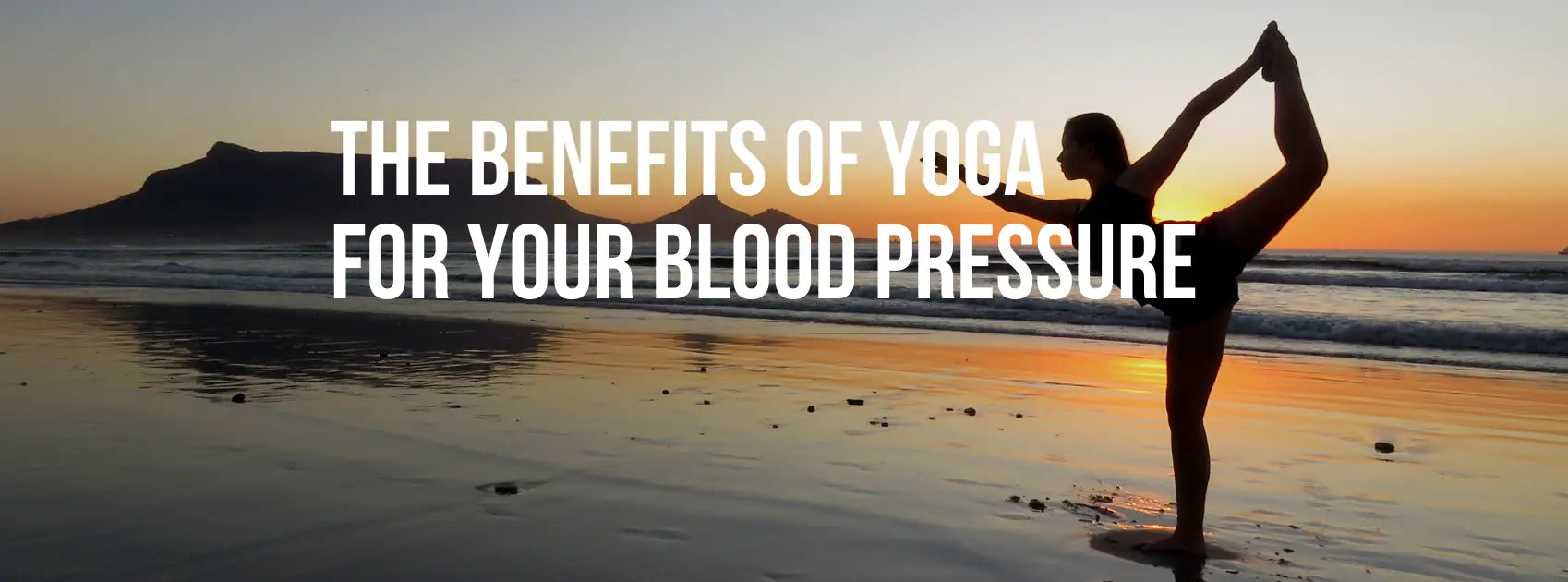
The Benefits of Yoga for Your Blood Pressure
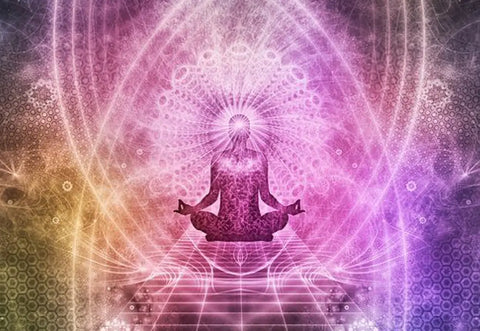
Yoga brings many benefits to your life. It increases your flexibility and muscle tone, improves respiration, energy, and vitality, maintains a balanced metabolism, and, most importantly, for this blog, it positively affects your blood pressure.
What is blood pressure?
In simple words, blood pressure is a measure of force your heart uses to pump blood through your blood vessels. It is measured in two figures, systolic and diastolic pressure in millimeters of mercury (mmHg). Systolic pressure is when your heart pushes the blood out, and diastolic is when the heart rests between the beats.
Ideal blood pressure values are between 90/60 mmHg and 120/80 mmHg.
You have high blood pressure or hypertension if your blood pressure values are higher than 140/90 mmHg. That means that your heart must pump harder to push the blood.
This is not an issue you should disregard. If untreated, hypertension may lead to a heart attack or a stroke.
Most people do not have any symptoms of high blood pressure. Usually, when symptoms occur, pressure is so high that it can be life-threatening. Some signs of hypertension are:
- pulsation in the back of the head or neck,
- severe headache,
- nosebleeds,
- anxiety,
- or shortness of breath.
Without treatment, hypertension may cause other health conditions besides heart attack and stroke, such as kidney damage, vision or memory loss, high lung pressure, aneurysm, dementia, metabolic syndrome, etc.
BM116 may help with dizziness, headache & blurred vision in people with blood pressure issues.
Having said that, lifestyle changes are crucial to help manage and control high blood pressure. They are the first line of defense.
Some changes you can make include the following:
- Improving your diet: decrease salt intake, eat less fat, increase fruit and vegetables, and moderate alcohol consumption.
- Exercising regularly: Try walking, jogging, swimming, or cycling at least five days a week.
- Managing stress: Try relaxation techniques like yoga, acupuncture, meditation, baths, etc.
- Quitting smoking. It is not news that smoking causes an acute increase in blood pressure. The best option is to stop.
If these changes are insufficient, seeking medical help and treatment is essential.
What are the benefits of yoga for your blood pressure?
Yoga is an ancient practice rooted in Indian philosophy. It is a group of mental, physical, and spiritual disciplines that aims to still and control the mind. Today, yoga is a popular way to promote physical and psychological well-being.
There are wide varieties of yoga practices, ranging from physically light to more demanding ones. Western world yoga combines the modern form of Hatha yoga and relaxation, stress-relief techniques, and physical postures. Traditional yoga focuses on meditation.
Research shows that yoga may help lower blood pressure in people who practice it at least three times per week.
In one study, researchers analyzed data from 49 trials with 3,517 participants, women and men, who were close to developing high blood pressure or already had high blood pressure. These trials controlled blood pressure before and after patients were assigned to groups who were doing yoga or groups without exercise programs.
Yoga group patients experienced average reductions in systolic blood pressure of 5 mmHg and diastolic by 3,9 mmHg more than in groups without exercise.
When people did yoga three times a week and included breathing and relaxation exercises, they experienced average decreases of 11 mmHg in systolic and 6 mmHg in diastolic pressure more than the control groups.
The lead study author is Yin Wu, a researcher in kinesiology at the University of Connecticut in Storrs. "So, yoga, among other lifestyle interventions (such as diet and smoking cessation), should be adopted early on even when the blood pressure is still relatively low and should be continued along with medication when blood pressure is relatively high," Wu said. (Source Reuters.com).
Another study was done in 2011 and published research into the effects of Iyengar yoga on hypertension.
In this study, the patients were not receiving medical treatment. One group with no prior yoga experience performed Iyengar yoga exercises over 12 weeks. The other group only made dietary changes.
After comparing the results, researchers found that "Twelve weeks of Iyengar yoga produces clinically meaningful improvements in 24-hour systolic blood pressure and diastolic blood pressure." (Source MedicalNewsToday).
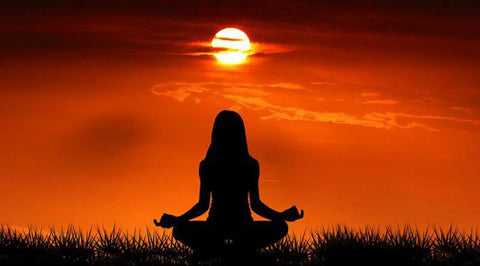
Do you want to include yoga in your life?
Before starting, it is important to talk to your doctor, as certain yoga poses should be avoided.
Always do your yoga exercises with a qualified instructor. An instructor will make sure you are doing your postures correctly and safely.
BM186 is useful for emotional distress and trauma. It may help your body to deal with fatigue and poor concentration. Effective natural support for anxiety and ability to cope with stress.
Keep in mind that if you practice yoga, you should never push your body to do a pose, and all movements should be slow.
Some poses that might benefit high blood pressure include:
Bound angle pose
Start by sitting in the Staff pose. Then sit on your sitting bones, bend your knees and open them on the sides as far as they will go. Draw your feet together, and clasp the big toes with two fingers. Sit straight, press your shoulder against your upper back, and bend softly straight ahead. Hold the pose for up to five minutes, then release the pose.
The benefits of this pose are:
- Improved circulation, especially in the pelvis
- Mild depression, stress, and anxiety relief
- Nervous system stimulation
- Improved posture
- Reduced blood pressure
- It can also help with infertility, flat feet, asthma, and menopause
Avoid this pose if you recently had hip or knee injuries or inflammation.
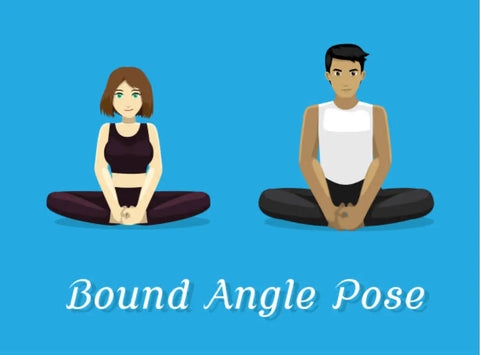
Corpse pose
This is a resting pose; try to remain in it for 5-10 minutes. But note that it can be very challenging to relax in this pose.
Lie on your back, arms and legs extended and separated, and keep your head centered. Open your palms and face them upwards. Close your eyes, relax, and bring attention to your whole body, including your face. By breathing deeply and smoothly, you will be drawn inward to the very essence of your being.
The benefits of this pose are:
- Stress reduction
- Muscle tension release
- Increased sleep quality
- Better circulation
If you have lower back stiffness, roll a blanket under your knees.
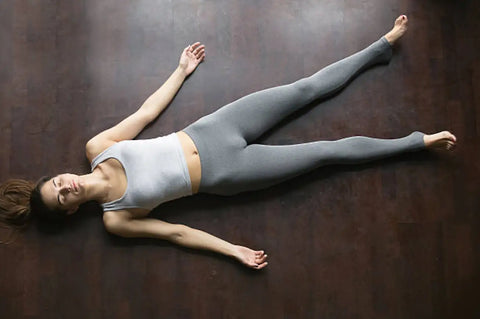
Downward facing dog
You can do this pose in a few ways. Here is how you can do it as a beginner.
Come to your knees and hands; your wrists should be under your shoulders and knees under your hips. Turn your toes under and spread your palms. Then exhale, lift your hips and straighten your legs. Press your index fingers actively on the floor. Try to engage your quadriceps to take your body's weight off your arms. Stretch your heels toward the floor and keep your head between your arms. Stay in this pose for at least ten breaths, exhale and bend your knees back to the child pose.
This pose’s benefits are:
- Posture improvement
- Better circulation, lower blood pressure
- Increased strength of legs, arms, and abdominal muscles
- Chronic back pain relief
Avoid doing this pose if you have a wrist injury, heart disease, vertigo, slipped spine disc, extremely high blood pressure, or are in your last trimester of pregnancy.
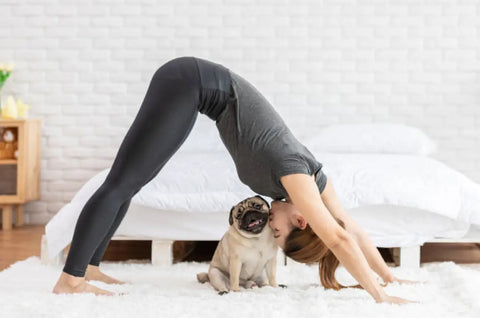
Bridge pose
Lie on your back and bend your knees, bringing the feet closer to your hips. Raise your hips and put your arms under your back. Then lift the chest and try to lift the hips higher. Breathe eight times, then slowly lower the hips to the floor.
The benefits of this pose are:
- Nervous and endocrine system stimulation
- Strengthens the spine
- Back pain relief
- Improved posture
Avoid doing this pose if you have a neck, back, shoulder, or knee injury. Always do it under the supervision of an experienced teacher.
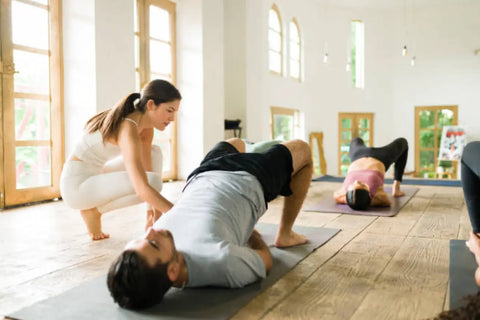
Child's pose
It is the most important resting position in yoga.
Come to your hands and knees on the yoga mat. Widen your legs but be sure your big toes are touching. Stretch your arms before you and put your forehead on the floor. Exhale, sit your hips on your heels, and try to stay in this position for up to three minutes.
Child pose’s benefits are:
- Deep relaxation
- Back and hips muscle stretching
- Digestion system stimulation
Do not do this pose if you are pregnant or have a knee injury.
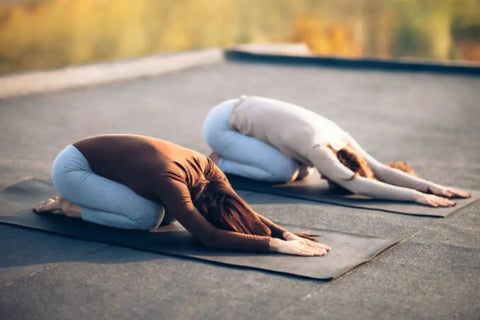
Seated forward bend
Begin by sitting on the floor with your legs in front of you. Sit up straight and press your heels away from your body. On exhale, bend forward with your spine straight. With your hands, reach your legs as far as they go while the spine is straight. It would be great if you could reach your feet. Hold that position for up to three minutes.
The benefits of this pose are
- Improved posture
- Stress relief
- Decreased PMS symptoms
- Headache relief
- Anxiety relief
Do not force doing this pose. Bend as much as you can, but don’t let it become too painful. Avoid doing it if you have shoulder, ankle, or hip injuries.
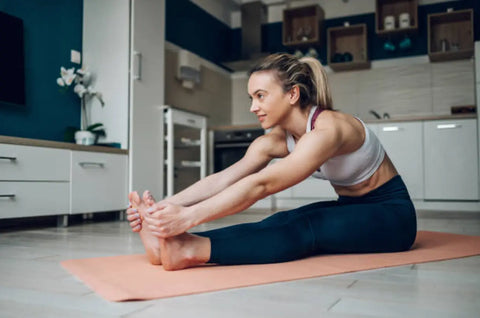
Other Yoga Benefits
Besides lowering blood pressure, here are some other yoga benefits:
- Stress relief. Physical activity, breathing techniques, and mental stimulation help relieve stress.
- Improves sleep. Consistent bedtime yoga helps you to sleep better and longer.
- Increased flexibility.
- Improved strength and balance.
- Back pain relief.
- Arthritis relief.
- Heart problems.
- Improved digestion.
- Weight control.
- Increased self-confidence.
- Better breathing.
- Better joint health.
- Improved mental health.
- Reduced inflammation.
- Anxiety and depression relief.
- Improved life quality.
- Better cardiovascular health.
- Improved bone health helps with osteoporosis and osteopenia.
- Better brain function.
While research is still ongoing, much proof shows that yoga benefits your overall health.
BIO24 may provide energy and help you cope with stress. Supports your body's ability to manage, absorb, and use nutrients while boosting your physical health and immune system. It is a useful remedy to keep you alert, fresh, and stress-free all day.
The bottom line
You feel better when practicing yoga regularly, regardless of your expertise level. Yoga is generally considered a safe physical activity. If you have medical issues, always prioritize your safety. Some health issues or pregnancy may need modifying or avoiding certain poses.
Yoga is an approach to life; it cultivates physical, mental, social, and emotional well-being through regular practice. The range of techniques includes breathing exercises, breath awareness, movement, postures, meditation, concentration, and relaxation. Do a little research on what type of yoga approach soothes you best, and find a yoga instructor before doing the exercises alone.
Sources: EverydayYoga, Yoga Basics, Yoga Journal, Verywell Fit, Bestmade Natural Products, Medical news today, Reuters




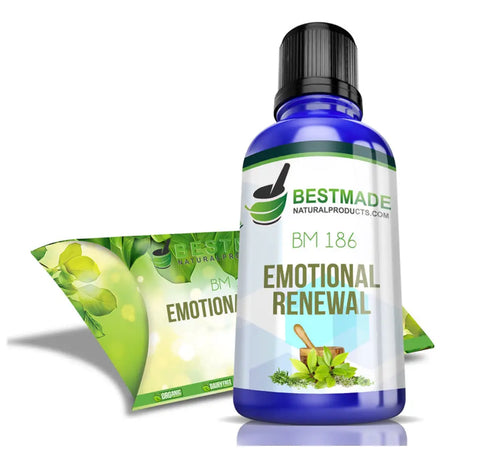

Leave a comment